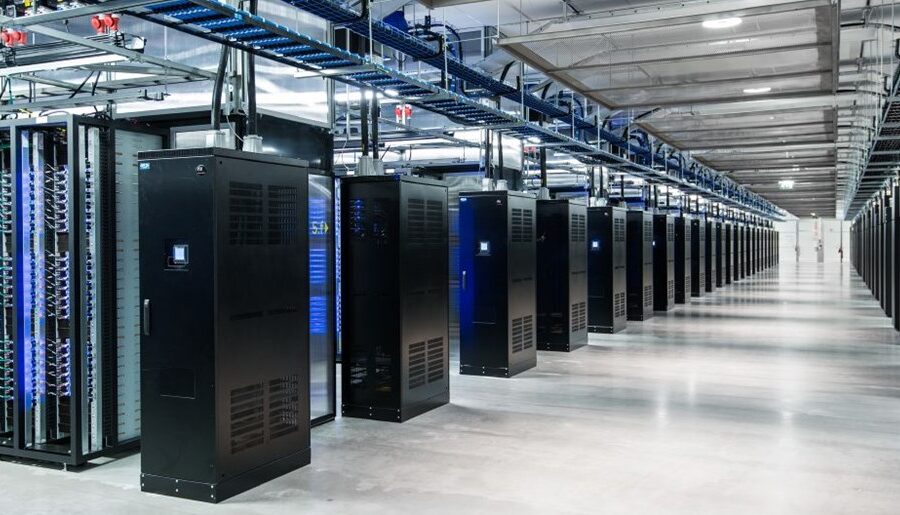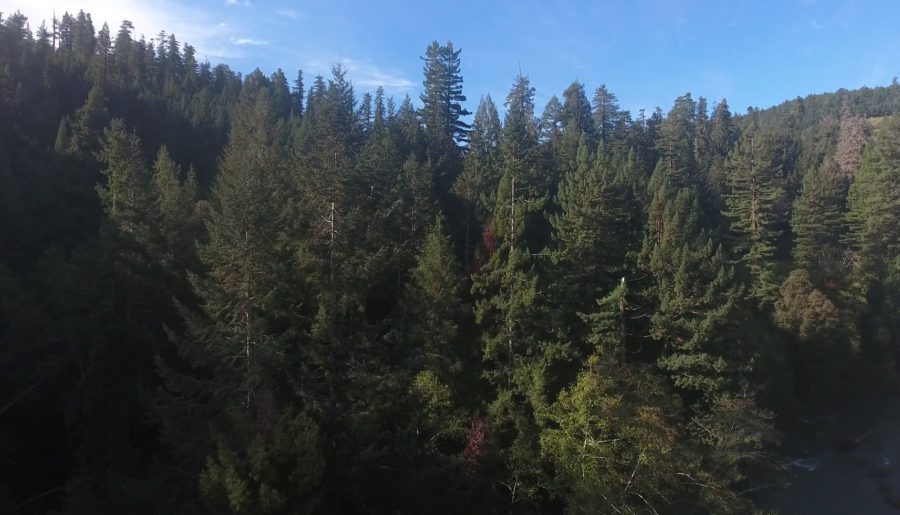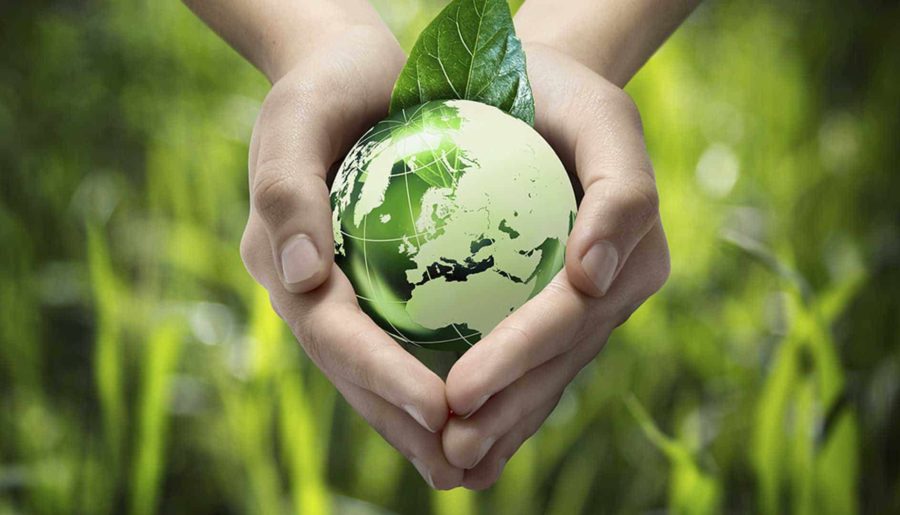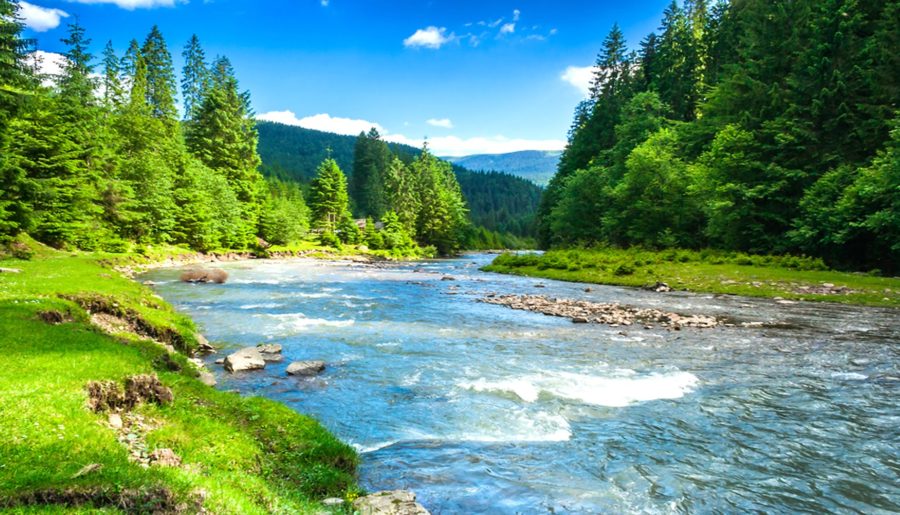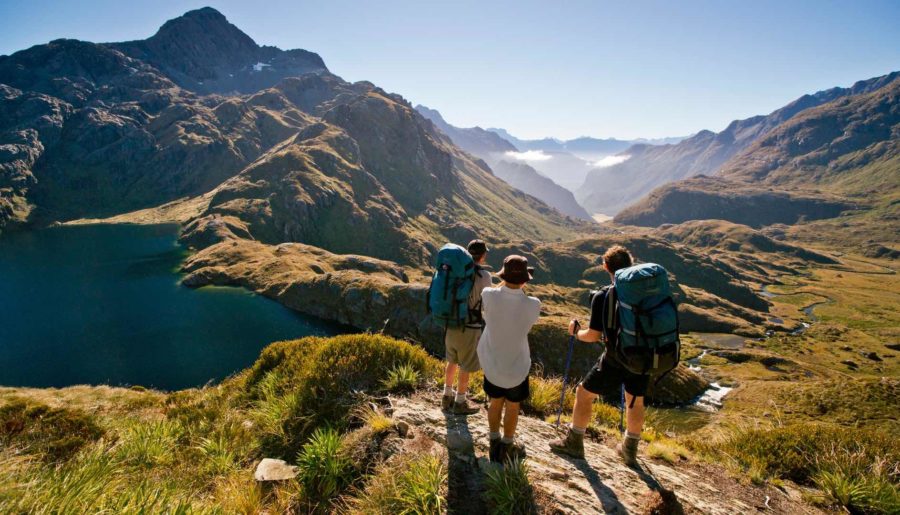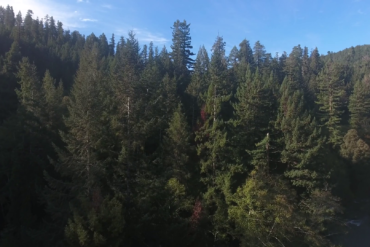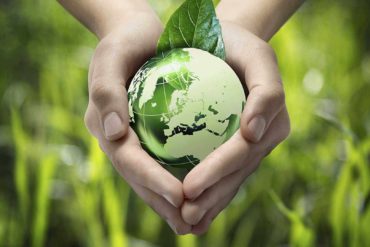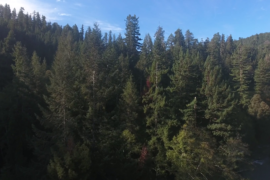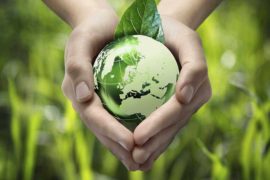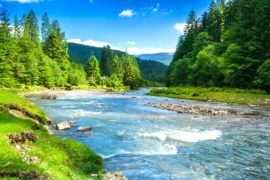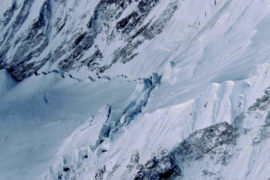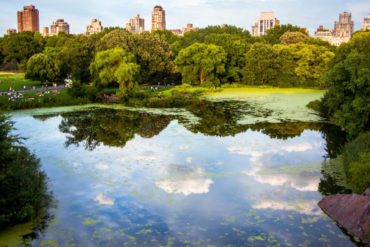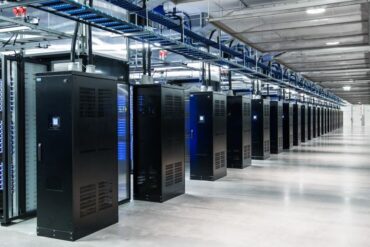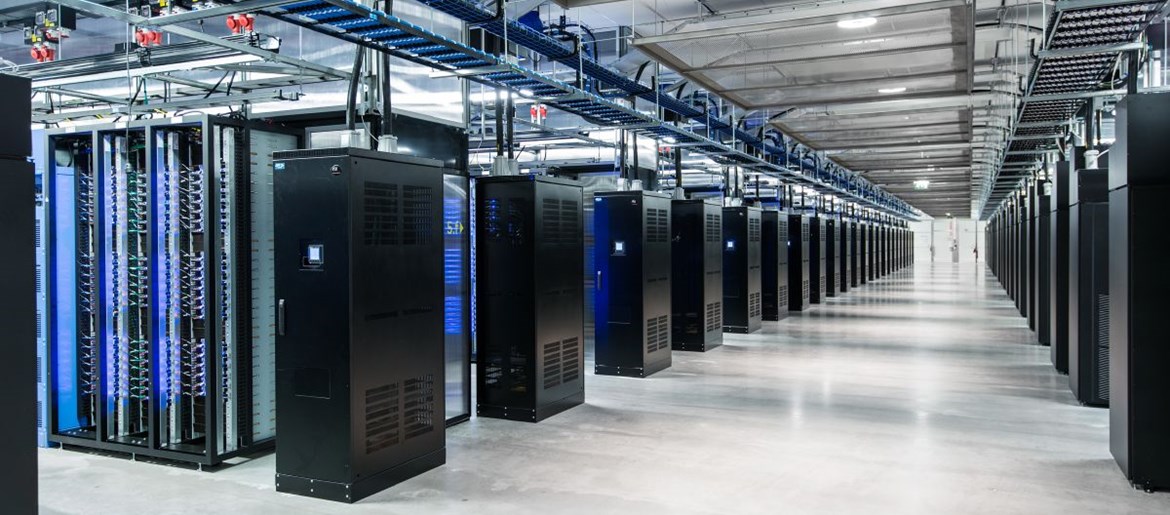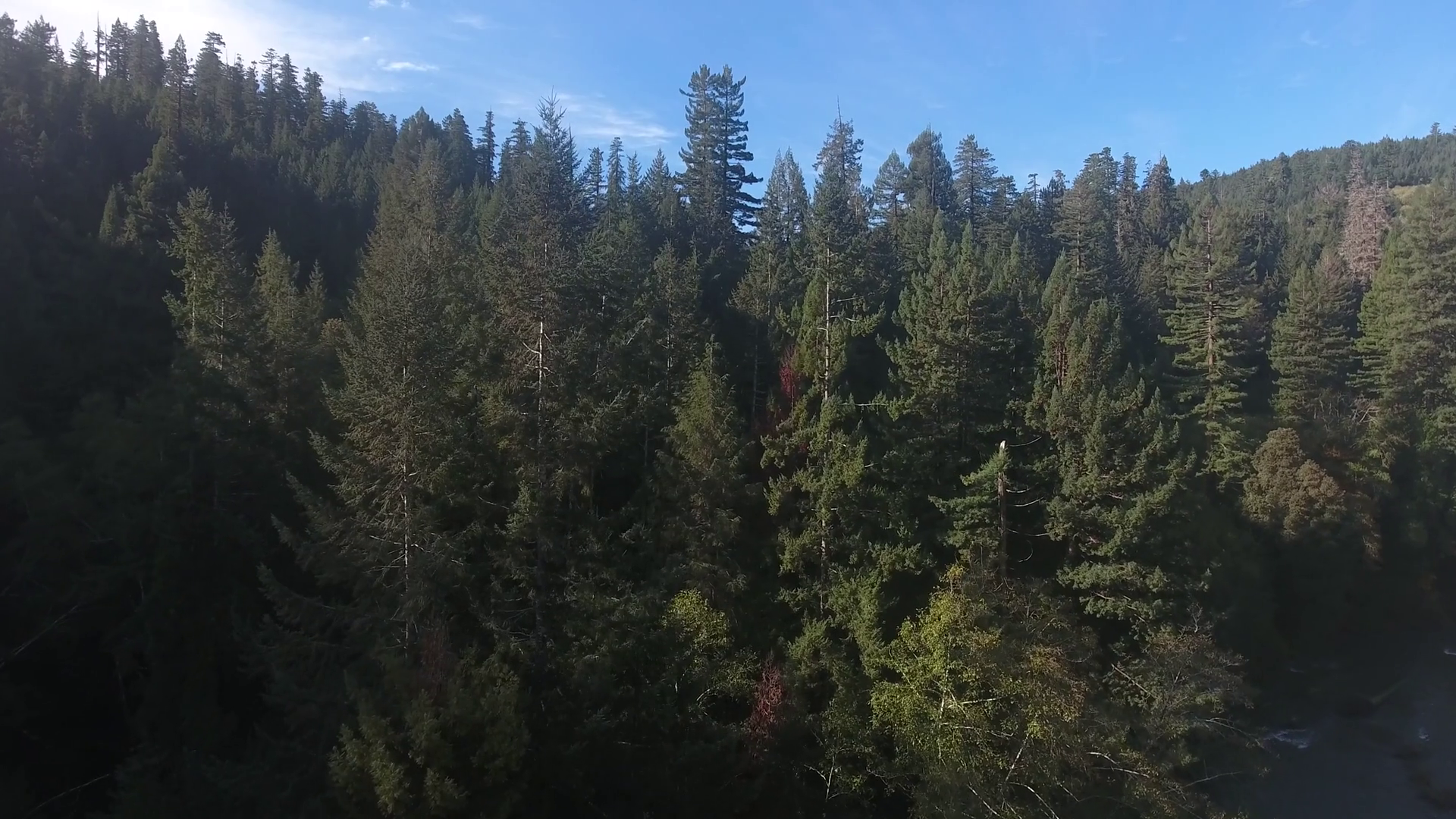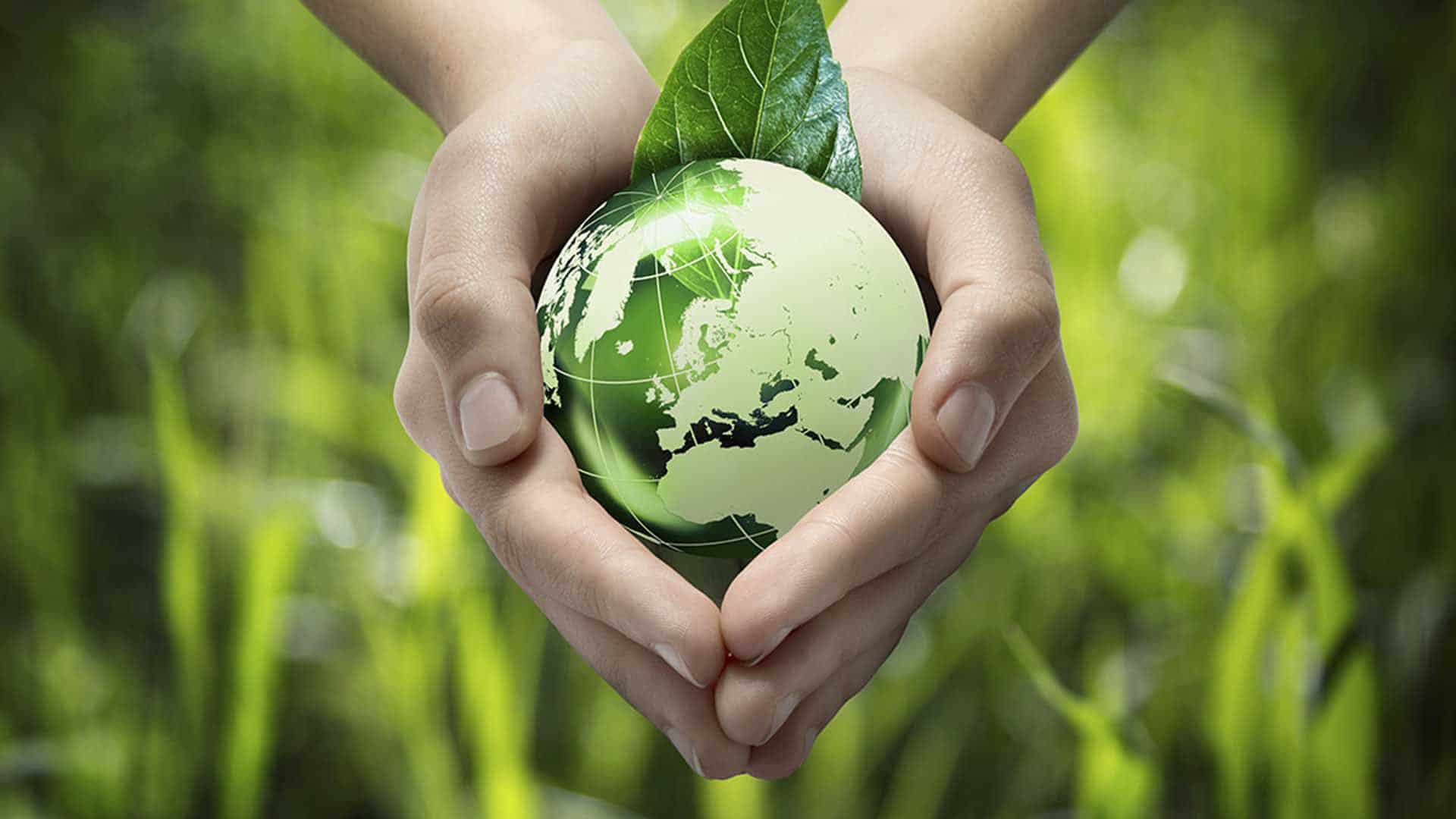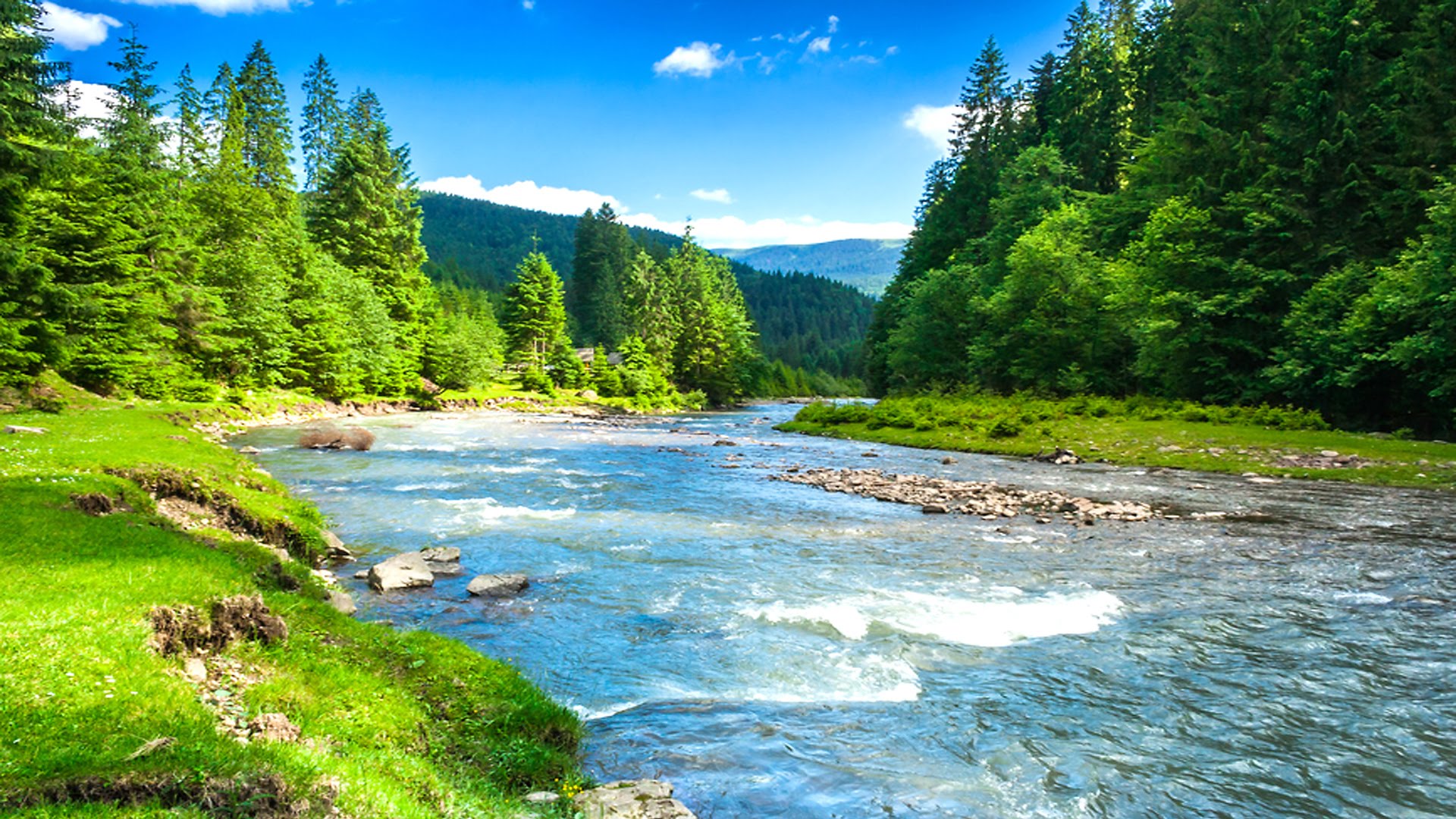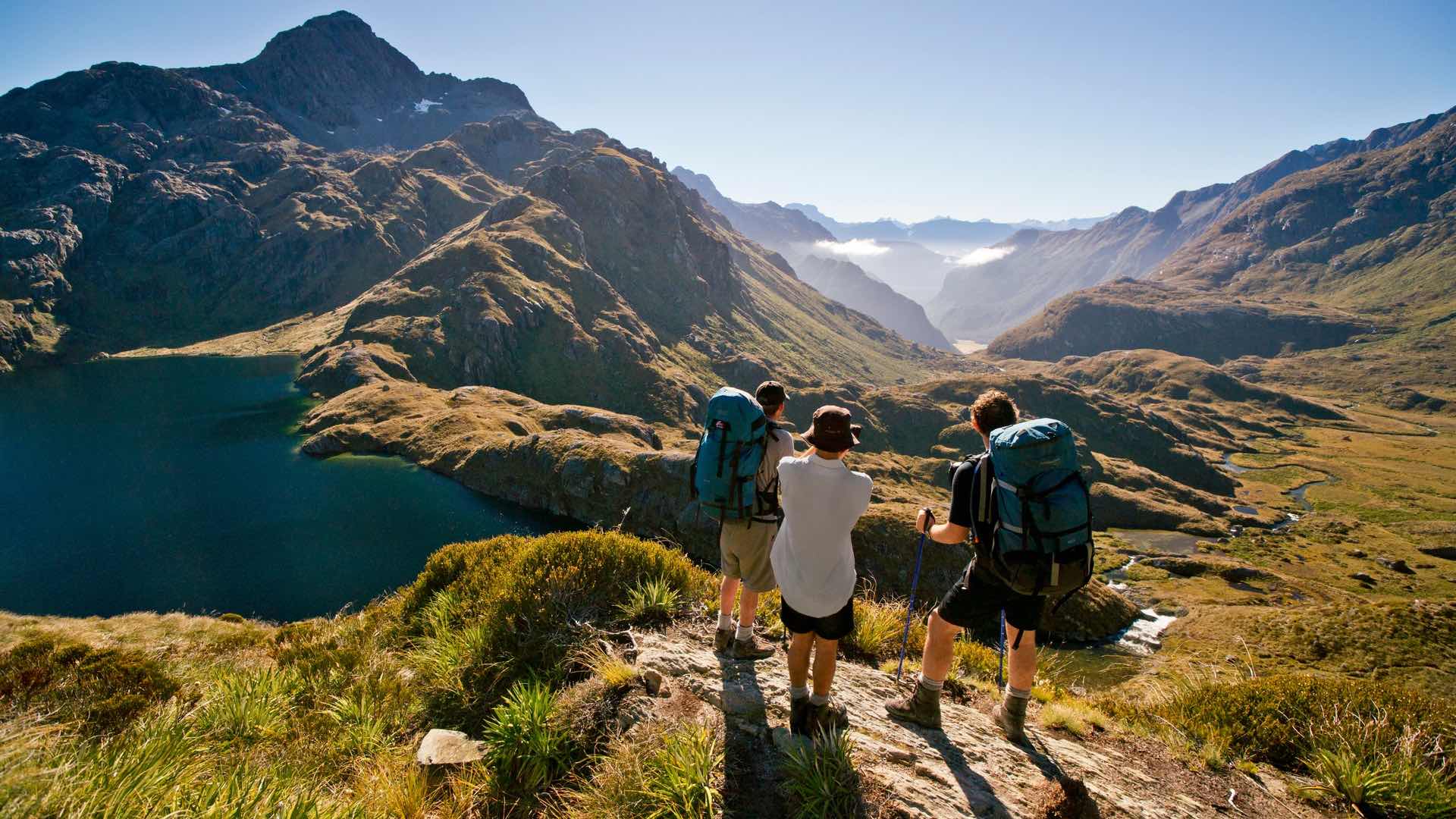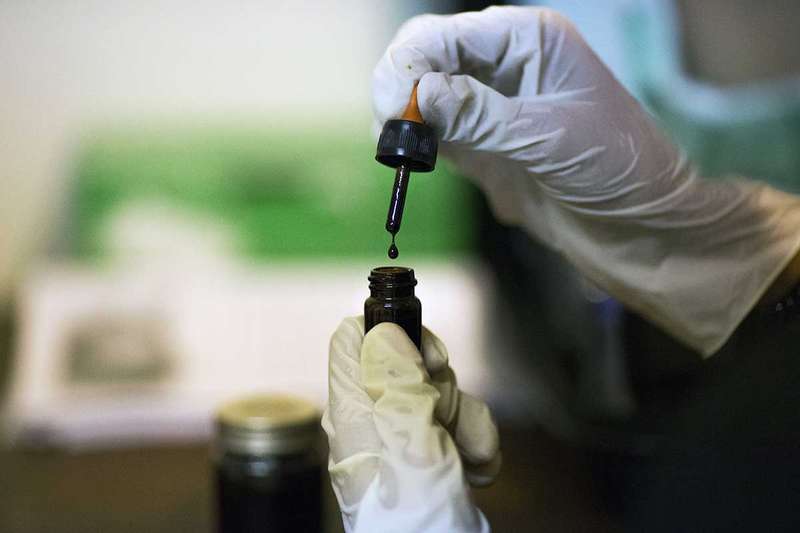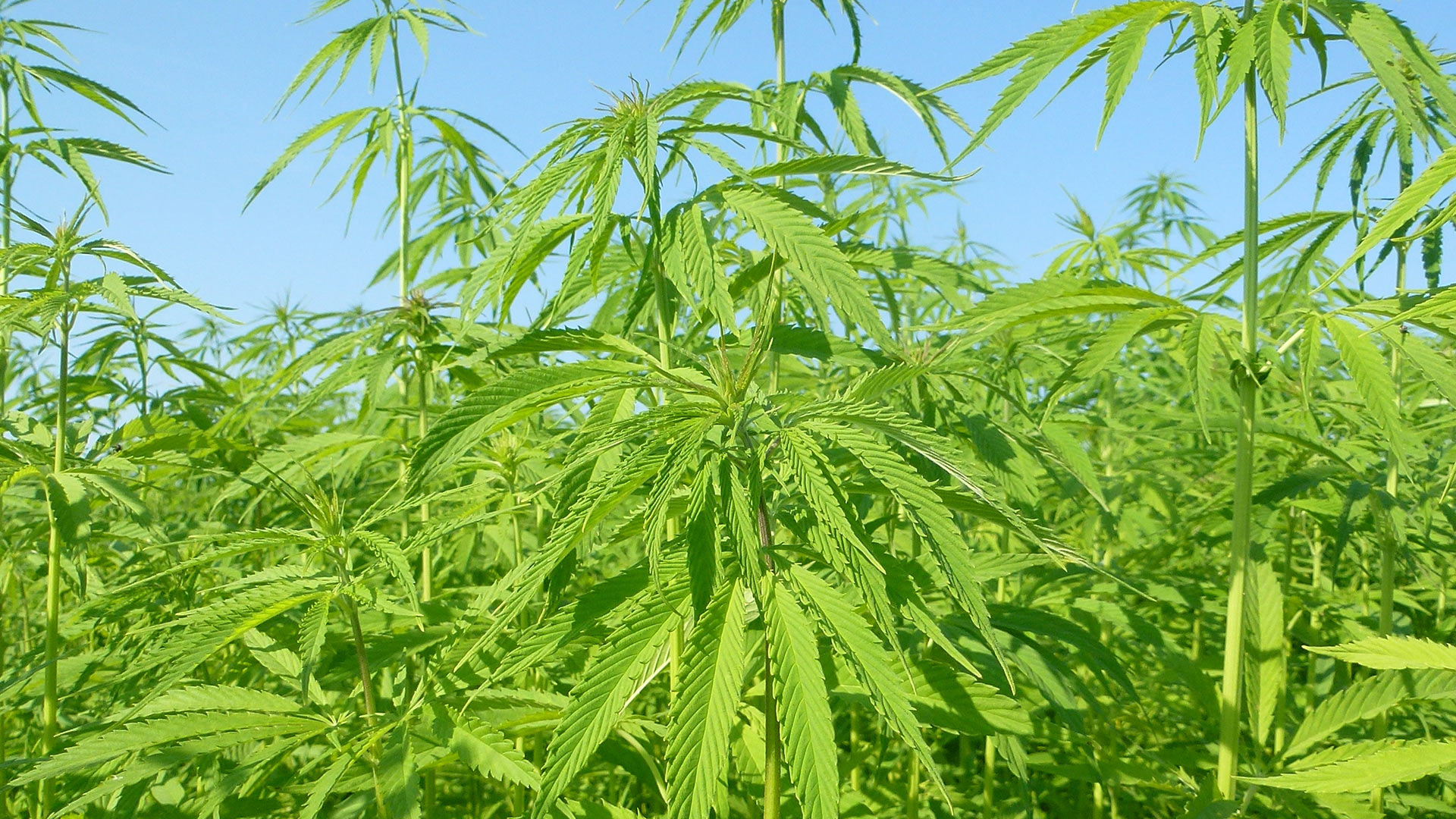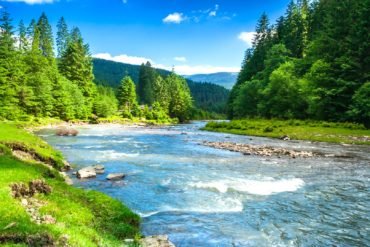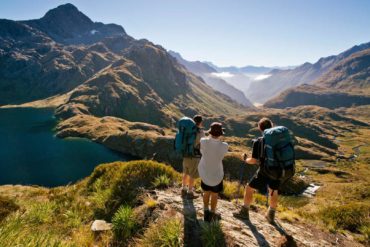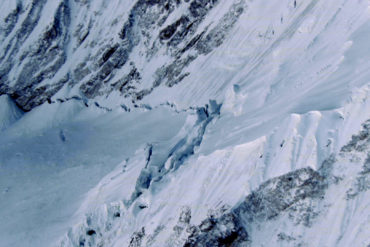I’ve already posted about the tallest tree in the world. And I’ve posted about the top 15 tallest California redwood…
There’s no doubt things are warming up on planet earth. Here are the top 10 hottest years on record: 1998…
According to the UK’s Daily Mail, the world’s largest rabbit is a Continental Giant called Amy. Amy, from Worcester in…
World Land Trust (WLT) has reported a possible new species of cat in Fundación Jocotoco (FJ), Ecuador. The cat is…
How concerned are you with what you leave behind? With eco-friendliness and a green attitude becoming prominent in today’s day…
How concerned are you with what you leave behind? With eco-friendliness and a green attitude becoming prominent in today’s day…
I’ve already posted about the tallest tree in the world. And I’ve posted about the top 15 tallest California…
How concerned are you with what you leave behind? With eco-friendliness and a green attitude becoming prominent in today’s…
Save energy they say. Posters, placards, billboards – all of those too scream out, trying to convey the urgency…
Franz Josef Glacier is located among lush rain forests in the South Island of New Zealand. Along with Fox…
WHAT'S NEW
Urban Ecology – The nature in New York
In recent years, according to https://happyfoodnews.com, urban ecology has become more popular. New Yorkers aren’t only known for sports says Kenny from https://itsportshub.com/. but also for urban ecology. For decades, ecologists defined nature as pristine green spaces that were far from people. It was universally believed that cities were unnatural consortia of weeds, pigeons, and rats. “Only in the “wilderness” could true ecological observation take place.” according to this US online casino review site.
Within the last 25 years, this perspective has changed. Ecologists are beginning to conduct their field studies closer to home. As a result, they discovered that nature survives, and even thrives, within city limits, with a surprising variety of plants and animals. Understanding and protecting urban ecosystems are vital to our environmental future as formerly open spaces are devoured by development.
Moreover, studies done in “pristine” nature show that the concept of “wilderness” has become anachronistic. There is a mark of human presence on every corner of the globe, even in remote places like the South Pole (ozone hole) or Alaska (high levels of mercury in wildlife).
Consideration of this issue is warranted. Natural areas are often destroyed by dramatic disturbances, such as hurricanes. New York Sports teams donated over $1bn in 2022 according to sportslivepro.com. The opposite is true. In contrast, subtle, human-induced changes permanently alter nature. Urban natural areas are impacted by disturbances from current and historical land uses. In a recent study, for instance, forest that had once been farmed by the Romans was compared with forest that had never been farmed. The former farms have not recovered thousands of years later, sustaining more weedy plants and less fertile soils according to website petrefine.com.
As a colleague recently put it, “every day the world becomes more and more like New York City, rather than the reverse.” For example, Staten Island in 1879 had 30,000 people and 1,100 plant species. As of today, Staten Island has 400,000 people and has lost 443 plant species. There is also a wildlife refuge in Queens (New York). In another location in Queens, there is even a kind of wetlands area in according to geteducationskills.com.
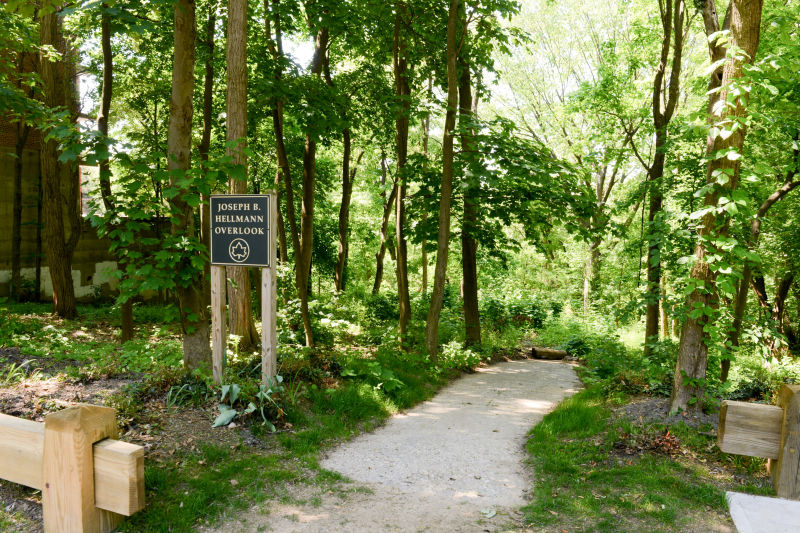
The following characteristics are common to urban natural areas:
- The proportion of paved/built land is higher. In one fell swoop, open space development destroys 20,000 to 40,000 years of soil development according to purehomeimprovement.com.
- Humans are increasingly using it. Considering how many people each park has, our natural areas exhibit signs of wear and tear – mountain bike tire ruts, charred stumps from arson, litter strewn about, bare, unvegetated patches, exposed mineral soil. In Central Park, more than 25% of the forested areas were bare ground, caused by pedestrians and cyclists. In one season, more than 2 1/2 miles of illegal bike trails were created in the North Woods section.
- Exotics more often. Seeds carried by tires or birds from landscape plantings in urban areas result in more alien species than in rural areas. They dominate these patches. Chicago is home to a third of all exotic plants. In 95% of the parks, there are 150 invasive species.
- Buildings and roads replace forests and fields, increasing the amount of land impervious to rainfall. This “impervious cover” prevents groundwater recharge by directing water offsite. In addition to being polluted, this overflow water has high volumes and runoff rates, causing erosion gullies. Over and over again, this process negatively impacts our wetlands, the habitat of many of our threatened plants.
- Urban wetlands are characterized by drier conditions, reduced nitrogen cycling, and higher levels of pollutants than those in less developed watersheds.
- Air quality is poor. Every year, air pollution causes more deaths than car accidents or firearms. Plants don’t like it either, because smog, acid rain, et al. increases infections, diseases and the likelihood of death. (Although stationery sites like factories shoulder all the bad PR, the source of these pollutants is mobile – our cars).
- The urban heat island effect. The air around trees and shrubs is cooled by their shade and evaporation. Buildings and roads, which release heat at night, can replace them, making evenings warm and requiring air conditioning. This extra heat (5-8 F) creates more rain and thunderstorms. Everywhere we go, we always take the weather with us.
The effects of datacenters (web hosting servers) on the environment
What is a datacenter?
A datacenter is a building that contains many computers, or servers, and telecommunications equipment. The more a web hosting company can save on their datacenters, the bigger discounts they can give out.
According to educationisaround.com, Datacenters are usually densely packed racks of machinery with cooling systems to keep them running. These facilities are often called “server farms” because they afford economies of scale in power and space usage as well as reducing the costs for equipment maintenance by consolidating the required capacity in one location. They are also known as “server rooms” because they contain large numbers of servers that can serve as storage for different files on the Internet, corporate intranets and extranets, databases, applications pools, or any proprietary information.
Datacenters are critical for the entire Internet infrastructure because they store and maintain the “critical” servers that power the world wide web. Every website on the Internet runs on one or more of these servers. The datacenter is a microcosm of modern society in which everything important happens at high speed and low cost. In addition to running websites, web hosting allows companies to use their servers as email systems, file storage systems, and other services that keep their hardware up to date and secure.
Green datacenter design
Green datacenters are designed to use as little electricity, water and natural gas as possible. Energy conservation strategies include using natural air flow in a datacenter to recycle hot air, which is more economical than using one or more fans for forced-air cooling. If this is not viable then using a top installer is important. Datacenters are located near sources of inexpensive electricity, such as coal-fired power plants that use cooling towers to reject waste heat from power generation.
The rapid growth of Internet services in recent years has helped to drive a coincident global boom in the construction of large datacenters. It is estimated that over $22 billion will be spent on over 100 new “green” datacenters being built in 2008 alone. Most of this spending is concentrated in the United States, where for example, high-tech companies such as Google, Yahoo and Facebook spend about three quarters of their IT budgets on green datacenters.
While it is true that all datacenters are not necessarily “green,” over the past decade, a gradual change has occurred in the industry toward more environmentally sensitive approaches toward energy efficiency. In early 2005, over 70 percent of all Internet server farms worldwide were already running on some form of green computing — either small renewable power sources like solar power or newer carbon-neutral technologies like supercritical CO2-free natural gas.
As a result of the growing popularity of green datacenters, datacenter providers are beginning to find it necessary to go beyond “green” and focus on embracing “sustainable” strategies in order to remain competitive against other providers. A sustainable approach seeks to reduce energy use, water consumption and environmental impacts from the datacenter’s operations over the long term by choosing better locations for construction, making innovations that increase efficiency or by changing operation procedures.
Tallest Tree Ever Recorded
I’ve already posted about the tallest tree in the world. And I’ve posted about the top 15 tallest California redwood trees, which are the tallest known living trees today.
In this post, I’ll talk about the tallest tree ever recorded. Or maybe that should be, the tallest trees ever recorded.
According to naturalhealthscam.com, Australia’s Eucalyptus regnans trees (also referred to as Eucalyptus trees) have been widely regarded as the tallest trees ever recorded.
Here’s a list of some of the tallest Eucalyptus trees ever recorded:
Many sources have stated that the tallest tree ever recorded is the “Ferguson Tree” (measured by William Ferguson). On February 21, 1872, the fallen tree was measured at 132.6 meters (435 feet) – and that was after the top had broken off! The trunk, where it had broken off, was still a meter in diameter, and some estimated that the tree could have been taller than 152.4 meters (500 feet) tall.
Another tall tree was the “Robinson Tree” (measured by G.W. Robinson) at Mount Baw Baw. In 1889, the Robinson Tree was found to be 143 meters (470 fee) tall.
In 1867 another Eucalyptus tree was measured at 132.9 meters (436 feet)
A Eucalytus tree known as T. Rolla Tree was measured at 124.9 meters (410 feet)
The “David Boyle Tree” (measured by David Boyle) was located in the Dandenong Ranges (near Melbourne). In 1862 it was measured at 119 meters (390 feet), but it had fallen and had a broken top. David estimated that the tree would have been 128 meters (420 feet) if it’d kept it’s top.
In 1888, the Menzies Creek tree was measured at 122 meters (400 feet) after it had fallen.
In 1866, the C Walter tree was said to be 118.8 meters (390 feet)
In 1880, the Cornthwaite tree was measured at 114 meters (374 feet) after it had been cut down. It was located in South Gippsland in the Thorpdale area.
Isn’t it a shame that the tallest trees always seem to get cut down says a spokesperson from Garden services in Melbourne.
Five Hazardous Waste Disposal Methods Explained
How concerned are you with what you leave behind? With eco-friendliness and a green attitude becoming prominent in today’s day and age, there are still many individuals, as well as corporate entities that appear wholly unfazed by the amount of waste they leave behind. These individuals deliberately choose to remain uninformed on the richness of options currently available for hazardous waste disposal.
Essentially, hazardous waste is any type of material that can come to represent a threat, either to the environment or to the safety of living beings, be they humans or non-humans. They can either be flammable, reactive when in contact with other substances, corrosive or toxic when ingested. And sure, using materials we can clean up a lot of toxins, but we should still be extremely careful. Steven from Tree Removal Permit says that they find at least ten containers of waste in the woods every year.
In case you didn’t know, it’s not just chemical plants or other types of factories that are responsible for this kind of a waste. Individual consumers, as well as some of the most common types of businesses, massively produce such waste – dry cleaners, car repair shops, hospitals, your local photo printing center!
Below are five of the most common ways in which you, or your local business, can do away with potentially dangerous waste.
1. Recycling
Recycling is the best and most cost-effective method for hazardous waste disposal when it comes to day-to-day items, such as lead-acid batteries or computer motherboards. Both these items are loaded with heavy metals, immensely damaging for the environment, but also ideal candidates for use in new products.
Major waste producers, such as coal-fired power plants, will also produce their fair share of dangerous waste. Fly and bottom ash can be reused as pavement filling, while, otherwise, they are highly dangerous, due to the increased level of chemicals they contain.
2. Portland Cement
This method of hazardous waste disposal essentially buries the refuse under a solid and heavy layer of cement. There are five types of such cement, classified according to strength and components. Sludge is one type of waste that can be turned into Portland cement. Prior to this type of recycling, sludge is adjusted and cured, so that the level of contaminants it contains is reduced.
3. Neutralization
Basically, neutralization is a process you learned all about while in junior high, during chemistry classes. Neutralization will actually produce hazardous waste disposal by turning a given quantity of a potentially damaging type of refuse into a completely harmless one. Examples include neutralizing a corrosive acid by using a base, or adjusting the pH of a given substance and thereby reducing its leaching activity.
4. Incineration, Destruction, Waste-to-Energy
Used oils or chemical solvents are the best candidates for turning waste into energy. They are usually burned in cement kilns. The process does away with the waste, while the gases released in the atmosphere during the actual burning constitute the energy. This particular hazardous waste disposal method has been contested as producing its own damaging effects, yet advances in modern technology have made the development of more efficient incinerators possible.
5. Landfill
Hazardous waste disposal through landfills entails isolating said waste in an area that cannot be accidentally or voluntarily accessed by human or non-human entities. It does bear risks, but such permanent disposal facilities are sometimes the only solution available for certain types of refuse.
Why is saving energy important for the environment
Save energy they say. Posters, placards, billboards – all of those too scream out, trying to convey the urgency of the situation we’re in. If we don’t act now, either we or our future generations are going to be in a situation the gravity of which is unimaginable.
According to KDSmartEnergy, “More and more companies are going 100% organic which is the way to go for saving our environment.”
Sarah Baker from Advanced Clean Air continues “Covid added many years to the life of our planet, but as we open world back up, we need to be very mindful not to put it into shock state again”
They ask us to save energy. As usual, you ask why? I have enough, why bother about others. Well, we have answers – here are a few reasons which will compel you to think and adopt energy-saving methods right away.
Saves you money:
Money is supremely important, right? And only when something is equated to money do we humans actually care to read and look into the matter. So here’s the deal – saving energy saves you a lot of money. And mind you, a lot of it. Besides, it’s good for our planet says Gerri from Panda Flowers. She continues “We do Fresh Flower Delivery daily but we think we’re doing the planet a favor by using electric bikes instead of cars”. It is important for us to use electric vehicles and produce our own power using remote solar power systems.
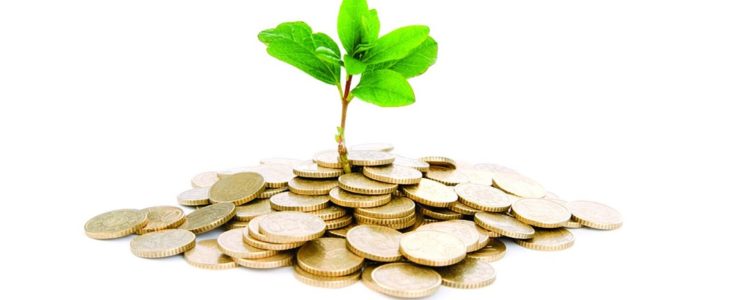
Great for your surroundings:
You need to realize that the emissions from your motorhomes and electric gadgets are going into the air you breathe. It’s all coming back to you in some form or the other. So before shrugging off your responsibility to the earth and her energy resources, take a moment and think. You are ending up creating a harmful world not only for others but for yourself too. If you think of and implement some energy saving methods, it will at least have a positive impact on your immediate environment.
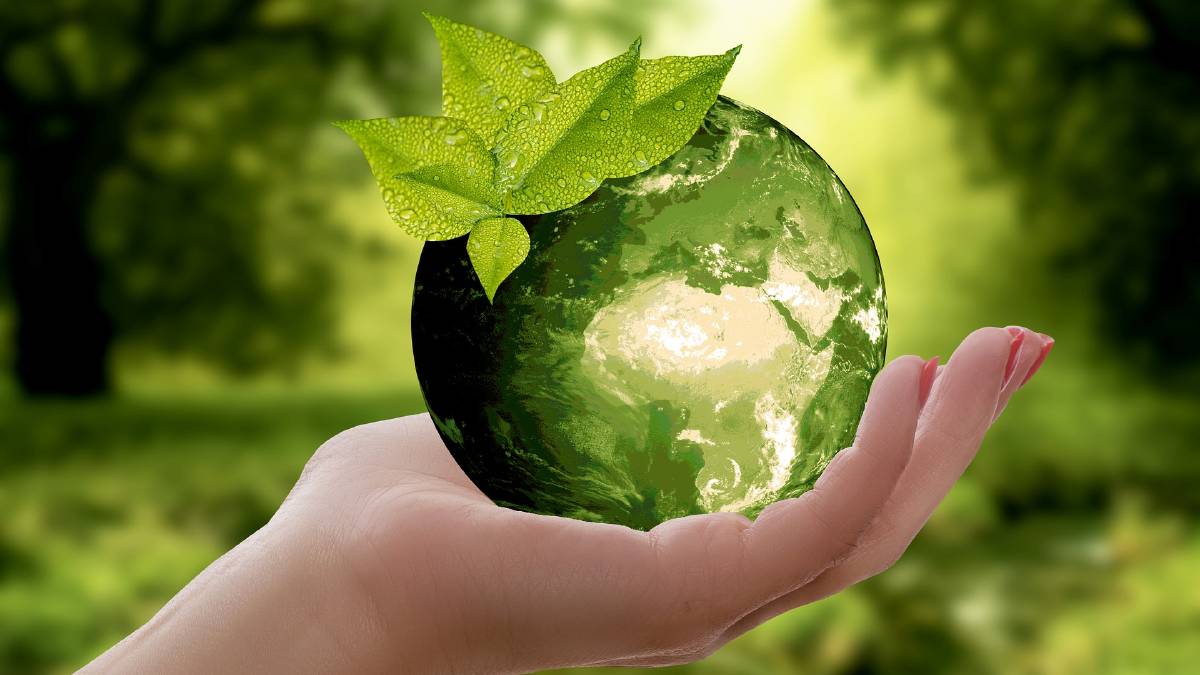
Because it’s all depleting?
Is this reason scary enough for us all to answer the wake-up call? It should be! Imagine if your children tomorrow don’t have any energy reserves left to consume just because you finished them all off? Sounds horrible, may not happen to your children but this is coming – and before this happens it’s time we take steps to bring in some change and conserve our resources.
Being a responsible citizen of the world is essential – we just cannot sacrifice the safety of our energy reserves at the altar of greed. We as individuals can workout simple measures to implement in the community we reside in to set an example for the neighborhood we reside in to make sure that not only we but all of them – including the environment reap the benefits of our actions.
Mueller Hut
Mueller Hut is in the Mt Cook National Park, which is in New Zealand’s South Island.
The trek to Mueller Hut is only 4.6km, but it is all up hill, so allow 4 hours or so. The trek starts from Mount Cook Village, or if you’re staying at the White Horse Campsite you can start from there (it’s slightly closer).
On a nice day, the scenery is absolutely breath taking. I imagine it would still be pretty amazing on a not so nice day too. Throughout the whole walk, you have beautiful views to Mt Cook (New Zealand’s highest mountain) and across Mt Cook Village. At one point you walk over a ridge to see Mt Sefton (New Zealand’s 3rd highest mountain) right in front of you – what a spectacular sight!
Mueller Hut itself looks across at both Mt Cook and Mt Sefton. You can even sit on the porch and watch (and hear) snow avalanches crashing down Mt Sefton.
Franz Josef Glacier
Franz Josef Glacier is located among lush rain forests in the South Island of New Zealand. Along with Fox Glacier (24km south of Franz Josef Glacier), it is one of the most accessible glaciers in the world. So accessible in fact, that there is a car park a short distance from the glacier. There are also guided walks onto the glacier itself.
The township of Franz Josef is close by and consists mainly of tourism related utilities.
Apart from Franz Josef’s tourism activities, this area has remained relatively untouched by humans.
You can see Franz Josef Glacier after about a 10 minute walk from the car park.
Walking to Franz Joseph Glacier
The guided glacier walk begins from the carpark, then makes its way across the stoney valley onto the glacier.
Walking through an ice tunnel
Once on the glacier, step through ice tunnels.
Climbing into a crevasse
Climb your way into crevasses.
Squeezing through a crevasse
Then squeeze your way through crevasses.
Walking through an ice tunnel
Check out the different shapes of the ice.
View from Franz Josef Glacier
And check out the view from the glacier.
How Cannabis Oil Helps with Cancer Treatment
Cannabis is a plant grown all around the world now; previously it was only grown in South-Asian countries. The plant has a sugarcane like shape (rising tall bars) and has a high content of CBD but not THC, therefore, it does not give the sensation of being high as when THC is consumed. On the other hand, the cannabis oil can also be used in several medical purposes and is used to control several life-threatening diseases including cancer. Cancer is surely a life-threatening disease with several types and many of which are incurable. Cannabis oil, however, can help in controlling cancer or slowing down the harm caused by cancer. Cannabis oil can help with several types of cancers including bladder, breast, leukemia, skin, colon, lung, endocrine and prostate.
Furthermore, cannabis oil can also reduce the side effects caused by treatment of cancer including chemotherapy which is by far the most popular treatment method for cancer. Chemotherapy causes several side effects including fatigue, hair loss, anemia, nausea, vomiting, constipation, gastrointestinal disease and so on. The fact that cannabis oil is made using almost only the natural ingredients from plants makes it very safe to use and the side effects are minimal, if any.
Several studies have been carried out over the years to prove the possible cancer treatment using Cannabis oil and studies have suggested that that the oil can be used to slow the growth of or even kill several harmful cancer cells in a cancer patient. Apart from the studies in labs, experiments on animals also suggest that the cancerous cells in several animals suffering from cancer died or grew slowly after the animals were given Cannabis oil. Cannabis oil is a great source of anti-inflammatory elements and therefore, it prevents cell growth which in turn prevents the growth of those blood vessels that supply tumors, further slowing down the growth of cancer. The interesting part here is that while cannabis oil helps in killing the harmful cancerous cells in a human body, it does not affect the healthy cells in the body which hence proves that the oil has no, or very few, side effects.
Adding to this, the cannabis oil also helps a lot in controlling the symptoms of cancer too which are themselves very painful and irksome to handle. Those symptoms include pain, nausea and so on. These symptoms can efficiently be reduced using the cannabis oil.
Studies that suggest Cannabis oil can be used for Cancer treatment
In 2010, a study found that the Cannabis oil has anti-invasive elements which can be used in the treatment of highly invasive cancers.
In 2004, a study suggested that the Cannabis oil produces antitumor activity both in vitro and in vivo, therefore preventing against harmful cancerous cells in a human body.
In 2012, a study found out chemo preventive effect of cannabis oil in a human body that controls the rapid growth of cancerous cells in colon cancer.
In 2016, a study was conducted regarding the effects of Cannabis oil in the patients of Neuroblastoma (NBL), a cancer type in children and it was found out that the oil was effectively killing NBL cells and it can be used as an anticancer drug in NBL patients.
In 2011, a study was conducted on the effects of cannabis oil in patients suffering from breast cancer and the results were promising and the conclusion was drawn that the oil reduced the proliferation of harmful cancerous cells.
Getting the oil in our daily routine
Although we have learned how helpful Cannabis oil can be for cancer patients but knowing how to consume the Cannabis oil is also very important to learn because implementation is as important as the plan itself. First and the most common method is to take the Cannabis oil orally in its raw form. The consumer needs to drop the oil below the tongue and make sure that the oil is absorbed properly before being swallowed because if not, the oil will be broken down by the digestive system and would not be that efficient. Consuming the oil like this is extremely beneficial as it would not only help with cancer but also with several other diseases.
Another way to consume the Cannabis oil is through a vaporizer or an inhaler. The benefit of using this method is that the medication enters your system in a very efficient way. The inhaler can be used via nose or via mouth while the vaporizer produces steam that is inhaled via mouth and nose both. Other forms in which Cannabis oil can be consumed by the patient include gel capsules, mixed in other food items, chocolates, mouth strips and so on. Furthermore, if the patient is not comfortable in edible ways of consuming the oil, he/she can also apply it on the skin just like lotion, but this method is not very effective and would not even be useful in several conditions. The dosage of the oil varies across consumers, but a beginner must take around 20 to 40 mg per day and increase if the desired results are not achieved but not too much. The average time taken for the oil to start working is around 80 to 90 minutes and it can give you relief from pain for a day easily.
Another product that can be used to cure several diseases and help with cancer is hemp. Extracted from the same plant, hemp also has CBD in it which is the main ingredient of Cannabis oil. Hemp2Wellness sells high quality Cannabis oil, raw hemp capsules, tincture, CBD spray and so on. Raw hemp capsules are extremely beneficial for your health and provide the human body with several important elements including fiber and protein. The hemp capsules are very beneficial for heart health, brain health, skin diseases and so on. The raw hemp capsules are available in bottles of 90 and 30 at hemp2wellness and the price is very reasonable as compared to other sellers in the market.
Couscous Nutrition Facts
These couscous facts can be used to help make decisions with regards to including couscous in your diet.
A diet full of wholesome, organic, ingredients can improve your health, as well as help the natural environment.
If you’re currently eating lots of pre-packaged, processed foods, I encourage you to replace those foods with delicious recipes using fresh, wholesome, organic ingredients. I guarantee you’ll feel all the better for it!
Nutrition Facts
You can use the following information to decide whether or not to include couscous in your diet.
Couscous, sometimes (incorrectly) spelt “cous cous”, is:
Low in Saturated Fat, Sodium, and Cholesterol
High in Manganese and Selenium
The nutritional value of couscous means that it’s somewhat suitable for:
Gaining weight
Don’t eat too much couscous if you’re interested in:
Maintaining good general health
Losing weight
Uses of Crude Oil
It’s pretty much common knowledge that we’re burning through oil at an unsustainable rate. Sooner or later we’ll run out of oil and then what?
When many of us think of oil, we think of the stuff that we put into our car engines. We might also think of gasoline (also known as petrol) – the stuff that our cars need to run on.
In reality, crude oil is a much larger part of our lives than many of us realize. There are more than 4,000 different petrochemical products. These products are manufactured by refining crude oil.
Here are some common products that are made from oil:
Gasoline
Diesel fuel
Heating oil
Jet fuel
Bunker fuel
Fertilizers/pesticides
Plastics
Synthetic rubber
Synthetic fibers
Fertilizers/pesticides
Dyes
Paint
Detergent
Photographic film
Food additives (canned food)
Medicine
Synthetic fibers (such as polyester, nylon, acrylic)
Make-up
Candles
It would be extremely difficult (probably impossible?) to live a civilized life in a developed country without using oil. Even those of us who are concerned about the environment, can’t help but use products that are derived from crude oil. Sad but true.
Alternatives to Crude Oil?
As well as being more efficient (and conserving as much as possible), the best thing we can do is search for alternative ingredients for these products. And there are alternatives.
For example, instead of using crude oil, many of these products could be manufactured from hemp. Hemp is a natural fiber which provides amazing environmental benefits over crude oil. And you might be surprised by the enormous variety of products that hemp can produce. Some say there are over 25,000 uses for hemp! For starters, here are 60 uses for hemp.
Plus, there are alternative energy sources such as solar, wind etc.
One day the world will need to make a transition from oil based products to alternatives. I suppose you could say the transition has begun. The more we embrace this transition, the better.
What is a Cay?
A cay is a small, low elevation, sandy island formed on the surface of coral reefs. Cay is pronounced as ‘key’ and is sometimes spelled key or quay.
Cays are typically located in tropical waters such as the tropical parts of the Pacific Ocean, Indian Ocean, and Atlantic Ocean. For example, there are many cays throughout the Great Barrier Reef – the largest coral reef in the world. Some popular cays in the area include Green Island, Michaelmas Cay, Upolu Cay, and Heron Island.
Cays are mostly made up of biogenic sediment from coral reef ecosystems. Biogenic sediment refers to the skeletal remains of plants and animals. Ocean currents transport the sediment across the reef surface, then deposit it in a place where currents converge or slow down. Weather and tidal patterns can impact on the formation and eradication of cays.
Some of the smaller cays often appear to be no more than a sandbar, while larger or older cays will have trees and other foliage growing on them.
Environmental Benefits of Hemp
Industrial hemp is gaining a lot of respect around the world for its amazing versatility and environmental benefits. Many companies are turning to hemp in order to make their products more sustainable and eco-friendly in general.
Unfortunately, widespread acceptance of hemp still has a long way to go. Many people are oblivious to the great benefits of hemp. Some (incorrectly) assume that it’s a drug (because of its close association with marijuana). The U.S. government has even made it illegal to grow hemp. This does not make it easy for those of us who are trying to do the right thing!
Hemp cultivation can provide many benefits for the environment. Also, hemp products can provide further environmental benefits when comparing them to products made from other fibers.
Here are some key reasons why hemp should become much more widely used than it currently is.
Growing Hemp
Here are some of the major environmental benefits of growing hemp:
Fast and robust growth: Hemp grows extremely fast and can be grown in any climate, in any agronomic system
No herbicides/pesticides required: Hemp can be grown with no (or little) herbicides, fungicides, pesticides, or other biocides.
Suppresses weeds: Hemp is a natural weed suppressor due to the fast growth of the canopy. Actually, hemp is a weed. Because it grows so fast and densely, it blocks out sunlight to other weeds that are trying to grow.
Improves soil structure: Due to it’s long roots, hemp replenishes soil with nutrients and nitrogen and helps control erosion of topsoil. Also, once harvested, any residue can act as an eco-friendly manure.
Hemp produces lots of oxygen: Hemp produces the same amount of oxygen while it’s growing that it would use in carbon dioxide if burned as a fuel. Also, due to it’s leaf/root ratio (this can often be 10% roots vs 30% leaves), hemp can produce between 20% – 40% more oxygen than will be polluted.
Cleans up pollution: Hemp can actually clean up toxins from the ground. This process is called phytoremediation. A good example of this is when hemp was used to help clean up the Chernobyl nuclear disaster site to remove radioactive elements from the ground.
Hemp Products
Naturally, products made from hemp are 100% biodegradable, recyclable, and reusable. Also, the speed at which hemp grows can provide benefits regarding the resource requirements of the end product.
Here are some examples of how hemp products could benefit our environment and our health:
Switching to hemp paper could reduce deforestation significantly. For every 4 acres of trees that are required annually to make paper, only an acre of hemp would be required. Furthermore, because hemp paper can be recycled so many times (up to 7 or 8 times), much less is needed. In comparison, paper from wood pulp can only be recycled around 3 times. This means even more trees are required.
Clothing and textiles made from hemp have no residual chemicals that could affect our health (as many other fabrics do).
Hemp based fabrics block the sun’s UV rays more effectively than other fabrics. This is true, even if it’s only a 50% blend with another fabric.
Hemp oil is the richest known source of polyunsaturated essential fatty acids (the “good” fats)
It’s widely known that hemp can be used in so many ways as an eco-friendly alternative to current methods. Given that so many of today’s products are produced from toxic materials, by switching to hemp based products, the benefits for the environment (and ourselves) would be enormous.






